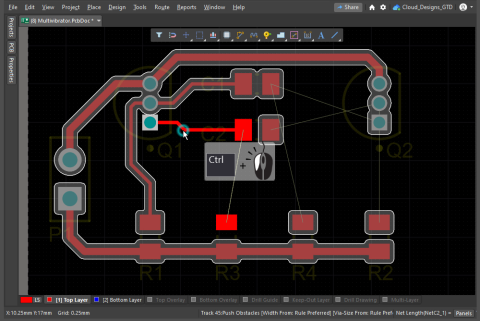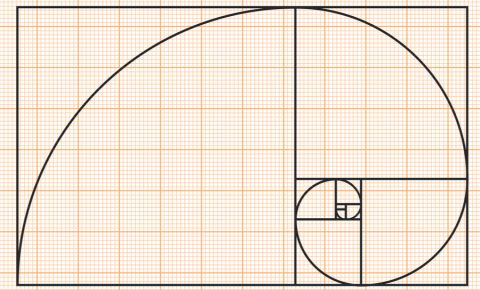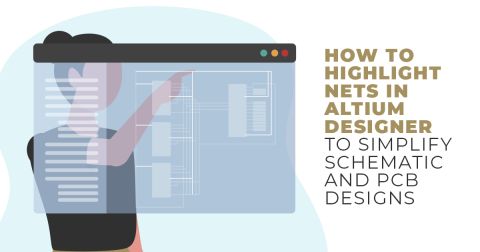PCB Trace Width vs. Current Table for High Power Designs

Copper is a strong conductor with a high melting point, but you should still do your best to keep temperatures low. This is where you’ll need to properly size power rail widths to keep the temperature within a certain limit. However, this is where you need to consider the current flowing in a given trace. When working with a power rail, high-voltage components, and other portions of your board that are sensitive to heat, you can determine the power trace width you need to use in your layout with a PCB trace width vs. the current table.
The other option is to use a calculator based on either IPC-2152 or IPC-2221 standards. It's also useful to know how to read the equivalent trace width vs. current graphs in IPC standards as a PCB trace width vs. current table is not always comprehensive. We'll review the resources you need in this article.
Keep Temperature Low in High Current Design
One question that often comes up in the context of PCB design and routing is determining the recommended power trace width required to keep your device’s temperature within a certain limit for a given current value, or vice versa. A typical operational goal is to keep the conductor temperature rise in your board within 10-20 °C. The goal in a high current design is then to size the trace width and copper weight so that temperature rise is kept within some limit for the required operating current.
IPC has developed standards relating the appropriate methodologies to test and calculate temperature rise in PCB traces for specific input currents. These standards are IPC-2221 and IPC-2152, and they both contain a large amount of information on these topics. Obviously, these standards are quite extensive and most designers do not have time to parse through all of the data to determine a trace width vs. current table. Thankfully, we have compiled a few resources to help you relate current to temperature rise:
- Trace width vs. current table (see below)
- IPC-2221 calculator for trace temperature rise
- IPC-2152 calculator for trace temperature rise
The video below outlines the relevant IPC standards, and it explains how they differ in terms of predictive power and applicability. The video also presents some resources for calculating current limits, or the expected trace temperature increase for a given input current.
Developing a PCB Trace Width vs. Current Table For IPC-2152
The IPC 2152 standards are widely accepted as the best place to start when sizing traces for a given current level and temperature rise. The formulas specified in these standards are straightforward for calculating current limits for a given temperature rise, and they allow a designer to write out a PCB trace width vs. the current table. This gives a simple tool that can be used to determine an upper limit on the allowed current in your traces.
A typical limitation for allowed temperature rise is 20 °C above ambient, although some designs might opt to keep temperature variations as low as 10 °C. This constraint is the first place to start before calculating the values in a PCB trace width vs. current table.
Example IPC-2152 Table: 1 oz./sq. ft. Copper/10 °C Temperature Rise
The PCB power trace width vs. current table below shows a number of trace widths and corresponding current values that will limit your temperature rise to 10 °C with 1 oz./sq. ft. copper weight. This should give you an idea of how to size traces in your PCB.
|
|
|
|
|
|
|
|
|
|
|
|
|
|
|
|
|
|
|
|
|
|
|
|
|
|
|
|
|
|
|
|
|
You’ve probably noticed two things from looking at the IPC-2152 formulas used to generate this table:
-
Different trace thicknesses/copper weights. The trace thickness needs to be calculated from the copper weight in your board. We’ve only included the standard 1 oz/sq. ft. value above. However, boards that will run at high currents often require heavier copper to accommodate a higher temperature rise.
-
Alternative substrates. The above data is compiled for FR4, which will cover a broad range of PCBs sent to production. However, advanced applications may require an aluminum core PCB, ceramic substrate, or advanced high-speed laminate with an alternative resin system. If you work with a substrate with higher thermal conductivity, then the temperature of your traces will be lower, as more heat is transported away from warm traces. To a first-order approximation, the temperature rise will be scaled by the ratio of the thermal conductivities of your desired substrate material to that of FR4.
Using the IPC 2152 Nomograph
If you want to work with different copper weights on internal or external layers, then one convenient tool is the set of nomographs from the IPC 2152 standard. This table offers a simple tool to size conductors for a specific current and temperature rise. Alternatively, you can determine the current that will produce a specific temperature rise if you have already chosen your power PCB trace width current. With this tool, you can visually verify the current limit in your trace design without finding or building an IPC-2152 calculator.
This is shown in two examples in the nomograph below. Note that the graph shown below is defined for internal traces only. To see the same version of this graph for external traces, see this article by Jeff Loyer.
IPC 2152 nomograph for PCB power trace width vs. current and temperature rise. Image modified from user Daniel Grillo on StackExchange.
The red arrow shows how to determine the maximum current for a desired power trace width, copper weight (i.e., trace cross-section area), and temperature rise. In this example, the conductor width (140 mils) is chosen first, and the red arrow is traced horizontally over to the desired copper weight (1 oz/sq. ft.). We then trace vertically to the desired temperature rise (10 °C), and then we trace back to the y-axis to find the corresponding current limit (~2.75 A).
The orange arrow goes in the other direction. We started with a desired current (1 A) and traced horizontally to our desired temperature rise (30 °C). We then trace downwards vertically to determine the trace dimensions. In this example, suppose we specify a 0.5 oz/sq. ft. copper weight. After tracing down to this line, we trace horizontally back to the y-axis to find the conductor width of ~40 mils. Suppose we wanted to use a copper weight of 1 oz/sq. ft.; in this case, we would find that the required power trace width is 20 mils.
If you use Altium Develop, you'll have access to routing tools that include an IPC-2221 calculator that determines a trace current limit for a 20 °C target temperature rise. The powerful PCB track width layout and routing tools in Altium Develop are built on a single unified design model that allows you to specify the trace and sizes you need within your design rules. When you’ve finished your design, and you want to release files to your manufacturer, Altium Develop makes it easy to collaborate and share your projects.
Whether you need to build reliable power electronics or advanced digital systems, Altium Develop unites every discipline into one collaborative force. Free from silos. Free from limits. It’s where engineers, designers, and innovators work as one to co-create without constraints. Experience Altium Develop today!











